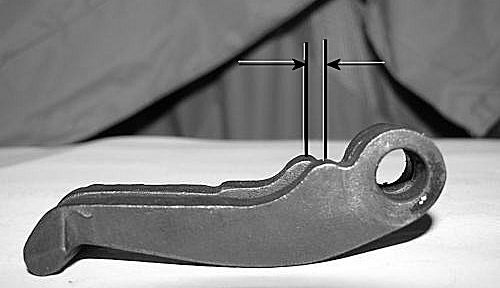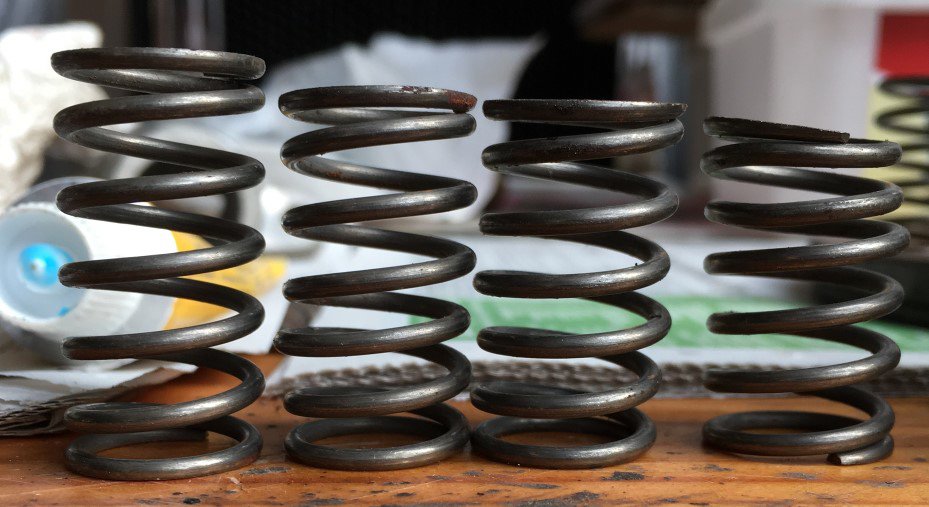The pedal rod end spring can now be dispensed with as there is no need to keep the race in constant contact with the levers as there was before. Mouse trap springs need not be fitted, nor the 4 speed box race return spring but, if preferred, the later wide foot clutch levers may be used. The above simple and unseen modification should result in a more reliable set up and a smoother clutch operation. Mine has been fitted for about 40,000 miles, so far without any problems. (PS: 2007, still fitted! If you use late levers you will have to heat them cherry red before bending as I believe they are cast. Of course there are other methods of adjusting the levers if you so wish, on this there are several articles. Munwellyns and now GM Autoservices always heat and bend all. Some people prefer to fit mouse trap springs, (not easy), but Glyn and I have never found it necessary.) Gary Munn
CLUTCH LEVERS:
Whilst rummaging
through a whole load of clutch levers I noticed that they aren’t all the
same!
 To be precise, the pivot point (marked) on some of them was much
closer to the round pin hole than
others. Clearly, the nearer the pivot is to the pin the lesser is the
movement of the lever pin, resulting in a soft pedal with a lot of travel,
and the further the pivot is from the pin, the greater is the movement of
the lever pin giving a hard pedal with a short travel.
Roger Ballard
To be precise, the pivot point (marked) on some of them was much
closer to the round pin hole than
others. Clearly, the nearer the pivot is to the pin the lesser is the
movement of the lever pin, resulting in a soft pedal with a lot of travel,
and the further the pivot is from the pin, the greater is the movement of
the lever pin giving a hard pedal with a short travel.
Roger Ballard
CLUTCH SPRINGS:
 Next
time you work on the clutch it may be worth checking the springs have
not become compressed and not working correctly. The photo below shows
some clutch springs from a recent clutch refurb, the spring on the left
is new for comparison. The other three springs are from the same clutch
which not only had become compressed, but also by differing amounts. New
springs are 11/2” thanks to www.a7c.co.uk for confirming the correct
length. Douglas Alderson DA7C
Next
time you work on the clutch it may be worth checking the springs have
not become compressed and not working correctly. The photo below shows
some clutch springs from a recent clutch refurb, the spring on the left
is new for comparison. The other three springs are from the same clutch
which not only had become compressed, but also by differing amounts. New
springs are 11/2” thanks to www.a7c.co.uk for confirming the correct
length. Douglas Alderson DA7C